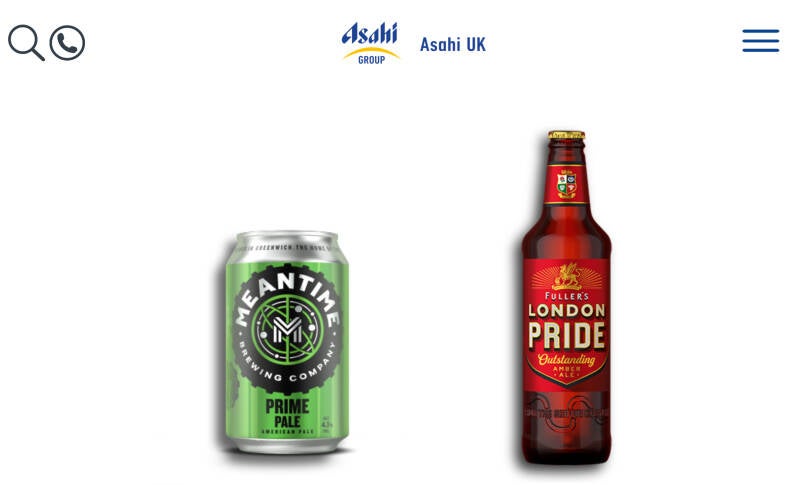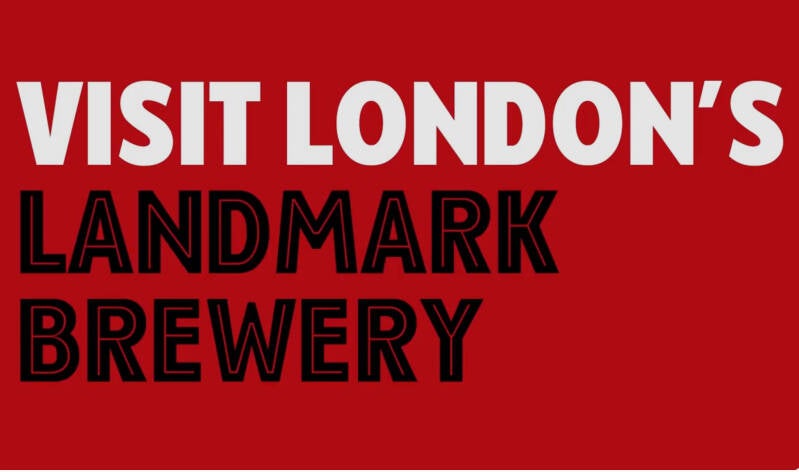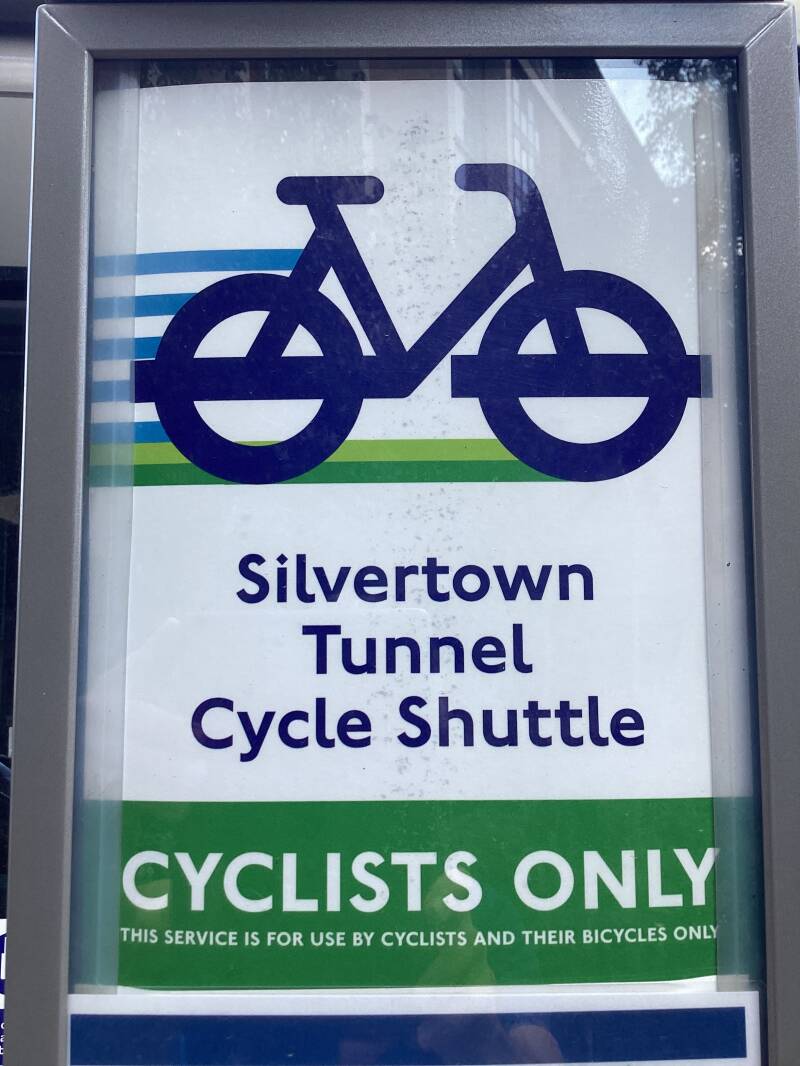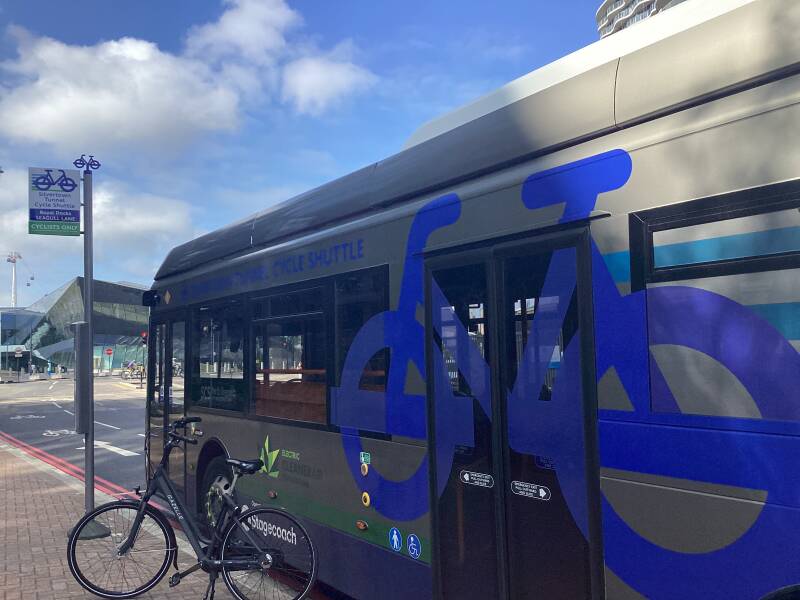
This route starts in Woolwich. See
https://temp-knhqkfetdrvzskuirrbc.webadorsite.com/woolwich-shooters-hill-avery-hill-new-eltham-eltham-kidbrooke-blackheath
BLACKHEATH (THE PARAGON, MORDEN COLLEGE). KIDBROOKE BLACKHEATH, ROYAL STANDARD WESTCOMBE PARK Residential. Conservation area EAST GREENWICH NORTH GREENWICH. Blackwall and Silvertown Tunnels
Link with the Thames Path route (SE LONDON VILLAGES 3)

After the Church of ST.MICHAEL and ALL ANGELS
Pond Road
Conservation Area

Another mysterious pond?
NATHANIEL HAWTHORNE stayed here in 1856
Novelist. Born in Salem, Massachusetts. His ancestor was John Hathorne, the only judge involved in the Salem witch trials who never repented of his actions. Nathaniel added a 'w' to his name in order to hide this relation. His best known works include 'The Scarlet Letter' and 'The House of the Seven Gables'. Died in Plymouth, New Hampshire.
Fulthorpe Rd.
THE PARAGON
Despite the the flop of Gloucester Circus, in GREENWICH, (intended to be two crescents enclosing a vaguely circular space, it was not a financial success and only one crescent was completed by 1809) in 1793 Searles proposed a development in Blackheath to the wealthy timber merchant John Cator. Cator had purchased the Wricklemarsh estate in the 1780s and had already demolished Wricklemarsh Hall, which stood where Pond Road meets Blackheath Park. The opportunity to develop the land suited Cator and he appointed Searles as the developer. From 1794 Searles started designing and building The Paragon. The first houses were occupied by 1800, and the crescent was complete before Nelson’s State funeral in January 1806.
Each owner of the 14 semi-detached houses linked by colonnades enjoyed 9 acres of land which provided pleasure grounds and lawns but also allowed space for kitchen gardens, fish ponds, and pasture for keeping cows to provide fresh milk. Servants’ quarters, laundry, stabling and a coach house were provided for each owner. The houses enjoyed pleasant country views and fresh air (there is always a breeze on Blackheath!).
The houses remained individual dwellings for many years, gradually being adapted for other uses as the area changed – a school, a private hotel, among others. Over time those buildings used as dwellings were drastically changed; windows were altered and extra rooms were added on the colonnade flat roofs. The elegant design was seriously damaged.
Severely damaged during World War ll, they were restored by Charles Bernard Brown between 1949 and 1958 and were converted into flats.
Morden Road
St.Germans Pl.
St. Germans Place in Blackheath is a prestigious residential road with a rich Georgian heritage, known for its stucco-fronted properties and proximity to Blackheath. It was developed in the 1820s by Lord Eliot (later the Earl of St Germans) and includes several buildings that are part of the Blackheath Conservation Area,
MORDEN COLLEGE
Morden College is a charity which has been providing residential care in Blackheath, for over 300 years. It was founded in 1695 by Sir John Morden, a merchant who built it on his Wricklemarsh estate in Blackheath to provide a home and support for "poor Merchants" who had fallen on hard times. The original 1695 buildings, designed in the style of Christopher Wren by his master mason, Edward Strong, are a Grade I listed quadrangle that still forms the heart of the charity.
The original college buildings were intended to house 40 single or widowed men. It has since expanded and today, Morden College continues to function as a charity supporting older people, providing accommodation and care services
Charity governance
Under the terms of John Morden’s will, College trustees are drawn from the Turkey Company, and should it fail (which it did in 1834) from the East India Company, and should that fail then from the Aldermen of the City of London, who have provided the Charity’s trustees since 1884. A centenary plaque installed in the main entrance in 1984 commemorates the Aldermen’s association.
Turkey merchants
The Levant Company, or Company of Turkey Merchants as it was also known, received its first charter in 1582 from Queen Elizabeth. The need for new markets for English cloth and anxiety about access to essential spices from the Far East prompted English merchants to seek to trade directly with the Levant where previously they had been content to leave it to the Venetians or the Dutch. Spain’s absorption of Portugal in 1580, however, threatened English spice supplies coming by way of the Cape; and they had to consider reverting to the older and more costly overland route through Aleppo. Venice was by now impoverished after fifty years of war, and could no longer be relied on to bring the spices to Leghorn, the great entrepôt of this period.
East India Company
How the East India Company shaped London: https://www.amdigital.co.uk/insights/blog/margaret-makepeace-east-india-company
Aldermen of the City of London
In the City of London, but not elsewhere in London, aldermen are still elected for each of the wards of the City by the regular electorate. To be a candidate to be Lord Mayor of the City of London, it is necessary to be an alderman and to have been a sheriff of the City of London.
The Court of Aldermen forms part of the senior governance of the City of London Corporation. It comprises twenty-five Aldermen of the City of London, presided over by the Lord Mayor (the Lord Mayor becomes senior Alderman while in the office). The Court was originally responsible for the entire administration of the City, but most of its responsibilities were subsumed by the Court of Common Council in the fourteenth century. The Court of Aldermen meets seven times a year in the Aldermen's Court Room at Guildhall.[1] The few remaining duties of the Court include approving people for Freedom of the City, approving the formation of new livery companies,[2]and appointing the Recorder of London.
MORDEN COLLEGE properties
Morden College has assets, both commercial and private properties
ESTATE OFFICE
MORDEN WHARF
Morden Wharf is a development site in Greenwich, London, that was previously owned by the Morden College charity. The site is being redeveloped into a residential-led, mixed-use scheme by Galliard Homesand City Developments Limited.
Footpath around MORDEN COLLEGE
Cross over Kidbrooke Grove
Kidbrooke Park Road
ST.JAMES’s Church

built in 1867 and was a Victorian-era structure built to accommodate a growing population, funded by private donations. The original tower spire was lost, and the roof and other parts of the church were damaged during World War II, but the church was subsequently rebuilt and restored in the 1950s
Kidbrooke Gardens
Kidbrooke Grove
Vicarage Avenue
Railway tunnel
The Blackheath railway tunnel, built in 1849, is a 1.6 km (1 mile) long tunnel that connects Blackheath and Charlton stations on the North Kent Line. It was constructed under private estates because the owners would not allow the railway to pass overground. The tunnel's long history is marked by continuous maintenance, with a recent £10 million project to repair water damage and reinforce the Victorian structure
St.John’s Park
ST.JOHN THE EVANGELIST Church
Stratheden Rd.
BATLEY PARK
It was originally a village green, known during the 18th century as Sheepgate Green, marking the intersection of four major roads. In the late 1880s, local philanthropist William Fox Batley and other local dignitaries, including the Rev John William Marshall, vicar of the nearby church of St John the Evangelist,[14] began to campaign for local improvements. Batley's contribution is recorded in an inscription on a memorial fountain, unveiled in May 1889, and he is also commemorated by a stained glass window in the church.[15] The central area was surrounded by railings and planted with new trees and shrubs, and new public lavatories were constructed from 1905 to 1907, and it became known as Batley Green or Batley Park,
Welcome to Blackheath Standard or “Standard” barea!
THE ROYAL STANDARD P.H.

Nearby (W)
VANBRUGH PARK
VANBRUGH PARK ESTATE: by the creators of the Barbican
Vanbrugh Park Estate is one of the lesser known housing estates designed by Chamberlin, Powell and Bon, a practice renowned for designing the Barbican Estate and Golden Lane Estate, considered some of the most important architecture in London. VPE (their second housing estate project) shares many stylistic similarities such as the semi-circular curved motifs, purposeful use of light, and approach to community living.
The estate was completed in 1963 and a couple of years later was featured in two leading architectural publications: Architectural Design and Architectural Review.
WESTCOMBE Hill
WESTCOMBE PARK Conservation Area

Nearby
Corner of Kirkside Road and Glenluce Road
ST.GEORGE’s CHURCH
Victorian red-brick structure completed in 1892 (architect: Newman & Newman).[3] As well as a place of worship it is also home to a Rudolf Steiner or Waldorf School-style nursery school.
Mycenae Road
WOODLANDS HOUSE and MYCENAE HOUSE
WOODLANDS HOUSE is the main landmark of the area. A four-storey Georgian villa (architect: George Gibson) still lies in its own grounds and was built between 1774 and 1776 for John Julius Angerstein, a Lloyd'sunderwriter and merchant whose collection of old master paintings was bought for the nation in 1824, following his death, to form the nucleus of the National Gallery, London.
The Angerstein family continued to live in Woodlands House until about 1870. It was later acquired by Sir Alfred Yarrow, a shipbuilder, in 1896.
From about 1923, the house served as a convent; neighbouring Mycenae House(formerly Kidbrooke House) was built in 1933 to provide dormitory space for the Little Sisters of the Assumption convent. Woodlands was then acquired by the London Borough of Greenwich in 1967 and opened as a Local History Library and Art Gallery (Woodlands Art Gallery) in 1972, while Mycenae House continues to serve as a community centre. Woodlands was leased by the London Borough of Greenwich in November 2007 to The Greenwich Steiner school.
To the W: Site of WESTCOMBE MANOR
To the west of Woodlands House was Westcombe Manor, former family seat of the Ballards,[7] the Lambardes,[8] and Sir Theophilus Biddulph (1612–1683; see also Biddulph baronets). The original house was rebuilt in 1723 by Sir Gregory Page, and let to tenants who included Lavinia Fenton, Dowager Duchess of Bolton, who died at the house in 1760[9] (Peachum Road is named after a role, Polly Peachum, played by Fenton as an actress).
Beside Westcombe Hill, A102 road. BLACKWALL TUNNEL Southern Approach
WESTCOMBE PARK Railway station
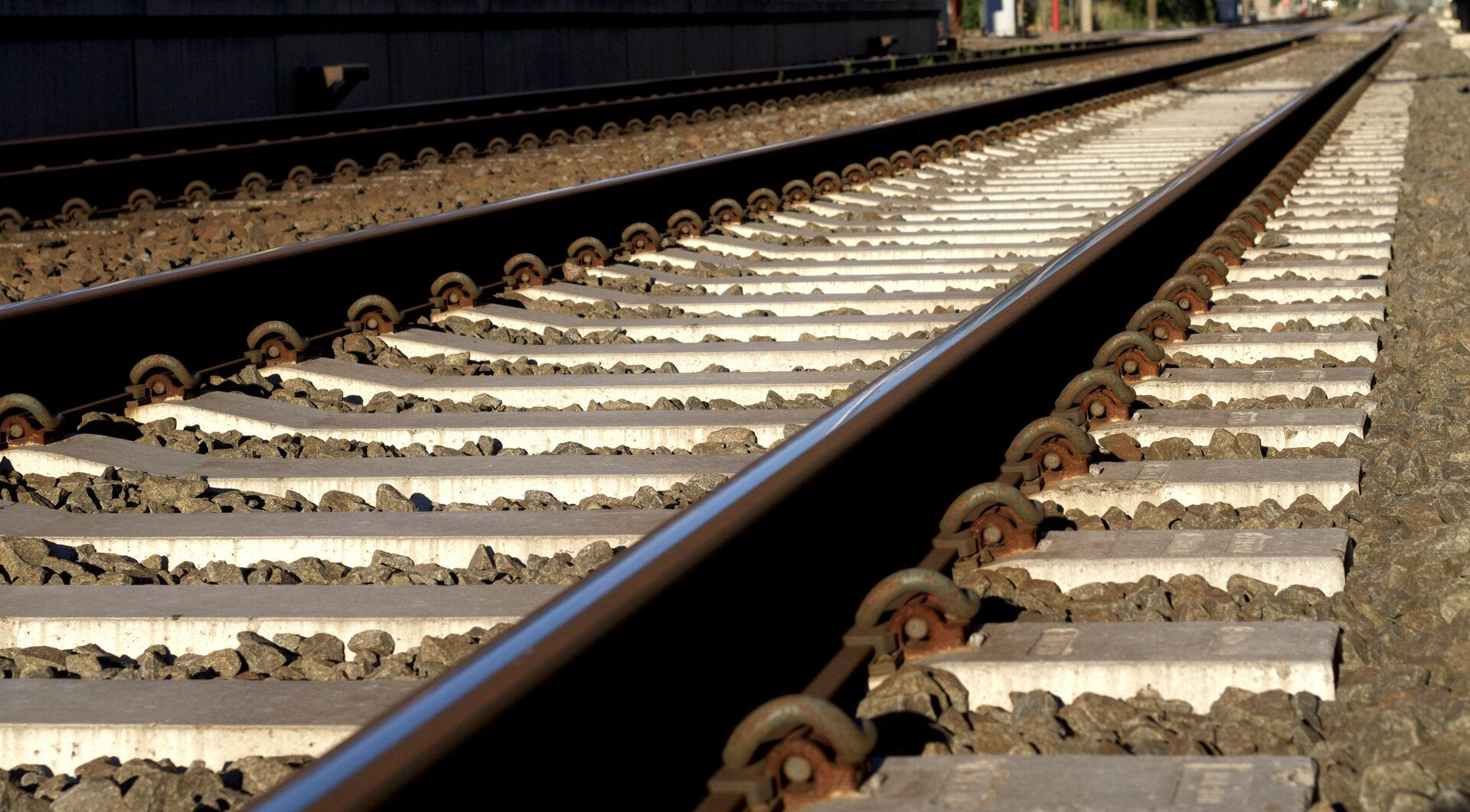
Shops and eateries
Woolwich Road
Welcome to East Greenwich!

ANGERSTEIN HOTEL

Former public LIBRARY
GREENWICH PLEASAUNCE
The park, opened in 1857, was originally the graveyard of Greenwich Hospital. Due to construction of a railway tunnel as part of the London and Greenwich Railway, the remains of around 3000 sailors and officers, including those who fought in the Battle of Trafalgar and the Crimean War were removed from the hospital site in 1875 and reinterred in the Pleasaunce (named after the former Royal Palace of Placentia or Palace of Pleasaunce).
There are 19 Commonwealth naval personnel burials of the 1914–1918 war and two from the 1939–1945 war.[7]
In 1926 the Pleasaunce was sold to the Metropolitan Borough of Greenwich, the Admiralty reserving rights of further burials. Railings around the tombstones were removed and part of the ground was landscaped as a park.
Today, the Pleasaunce has a small children's playground (installed in 2001), a community centre (The Bridge,[8] formerly the under-5s One O'clock Club run by Royal Borough of Greenwich), a cafeteria and a small war memorial.
The park is also a common meeting point for an active community of local dog owners, who staged a dog nativity play in the park in December 2024
Former FIRE STATION
Tunnel Avenue
ROTHBURY HALL. Now EMERGENCY EXIT ARTS’ HG
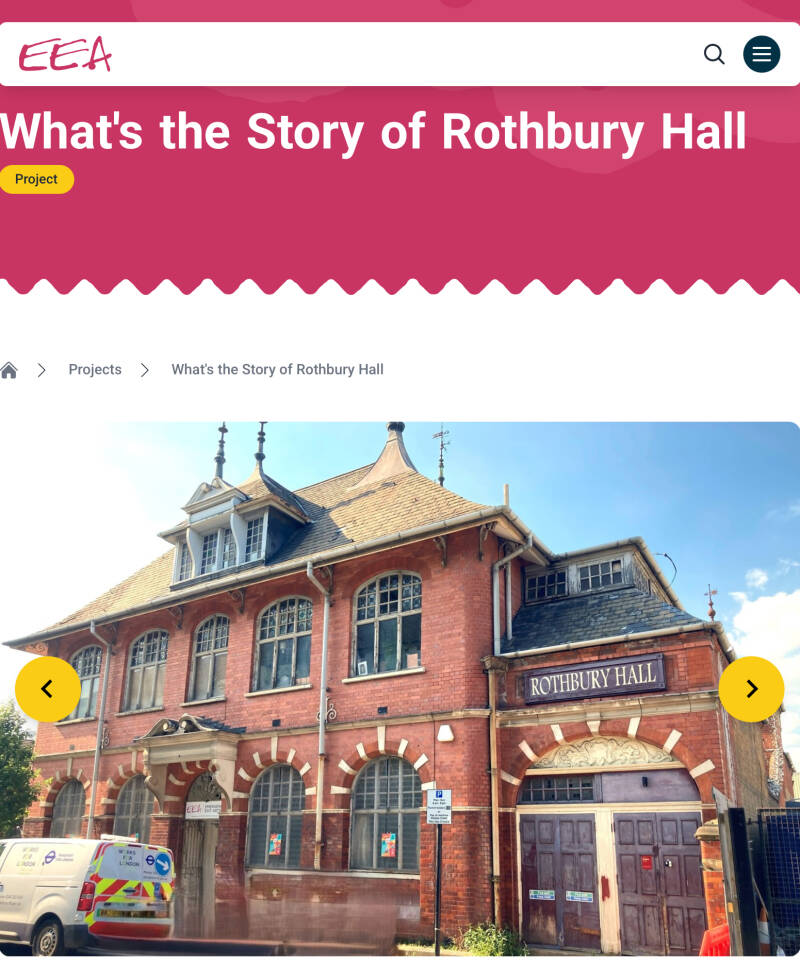
Founded 1980, EEA began as an artists’ collective born out of a desire to radically transform the ordinary into the extraordinary. At a time of social and political change we aspired to make a positive difference to people’s lives, particularly those who have been discriminated against and those living in economically excluded communities across London and the UK. Now a registered charity and one of the Arts Council England’s National Portfolio Organisations, EEA has evolved into the reputable outdoor arts company it is today, still pioneering and still inspiring change through creativity.
We’ve been resident in Rothbury Hall in Greenwich, SE London, for over 35 years. It’s a building loaded with history and originally built for use by the community. We maintain this tradition and are proud to call it our home.

Cottages
Former MEANTIME BREWERY
The Meantime Brewery in Greenwich has closed, and production is being moved to the Fuller's Griffin Brewery in Chiswick. This closure is part of a strategy by Asahi UK, the owner of Meantime, to consolidate its UK brewing operations. While the production facility has moved, the company plans to maintain a consumer presence in Greenwich with a new retail experience
In 2019, ASAHI bought Fuller's beer business from Fuller, Smith & Turner plc for an enterprise value of £250 million. The assets sold comprised the entirety of Fuller's beer, cider and soft drinks brewing and production, wine wholesaling, as well as the distribution thereof and also includes the Griffin Brewery, Cornish Orchards, Dark Star Brewing and Nectar Imports.
Telcon Way
TELCON

Telcon is an acronym for Telegraph Construction and Maintenance Company, which was formed in 1864 through the merger of the Gutta Percha Company and Glass, Elliot & Co. The company was a major player in the early development of undersea telecommunications cables, particularly the Atlantic cable, and the name originated from its business of manufacturing and laying telegraph cables. The site of the former company in Greenwich is now associated with Alcatel Submarine Networks
Pioneers
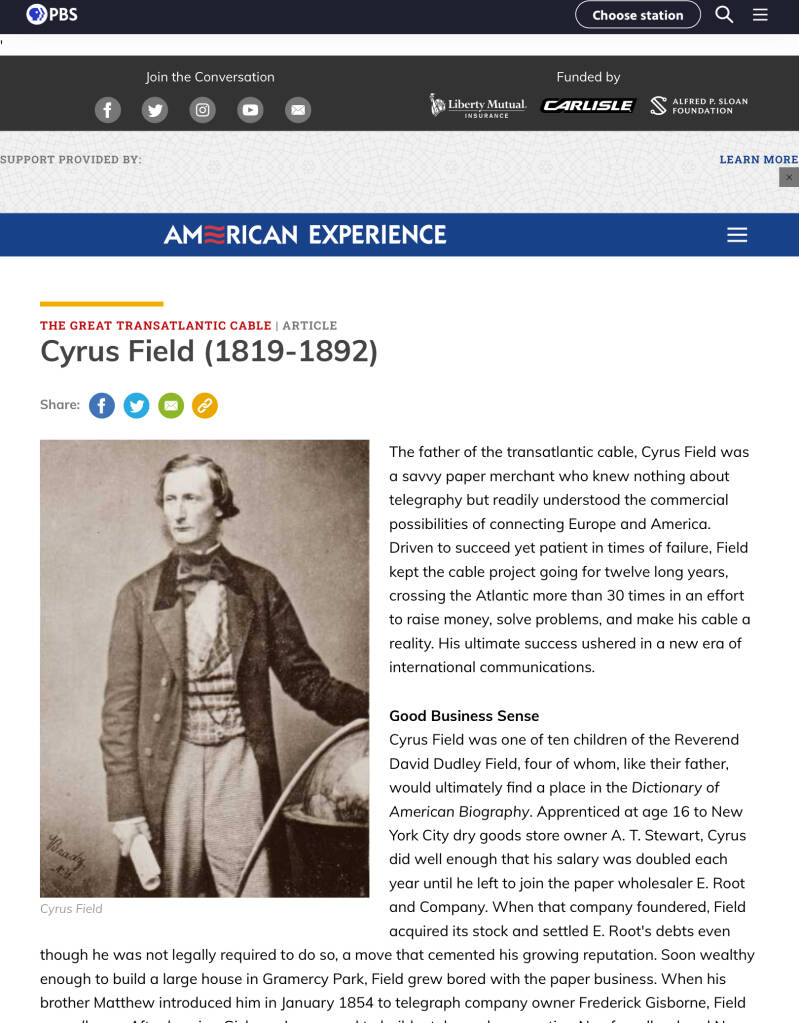
A nearby street is named Cyrus Field Street in honor of the financier who was instrumental in the development of international communications

Along the riverside (part of the Thames Path, see web SE London Villages 1)
ENDERBY HOUSE

Sugar Studios
Before opening our studio location business, we were making props, models and scenery for 30 years in an old Tate & Lyle refinery on the Greenwich Peninsula, catering for some of the most iconic brands in the world.
Having set aside some space to shoot MDM creations, our customers began asking, “could we shoot here too?”
So, like a lot of businesses, Sugar Studios came about not because we came up with a great idea, but because our customers gave us a great idea. They imagined it and we made it happen – as simple as that – and whether you need a giant shark, a virtual production stage, or just one of the biggest infinity coves in London, that remains our mantra.
Morden Wharf
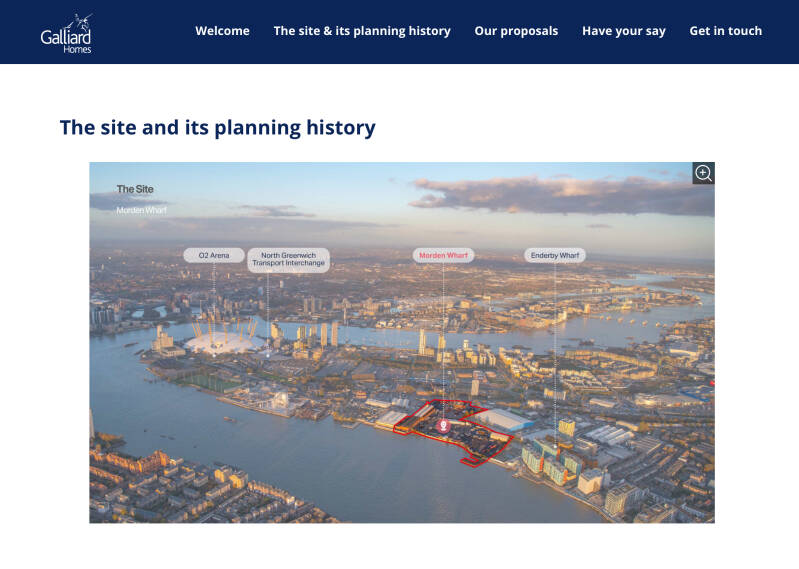

Bridge to Millenium Way
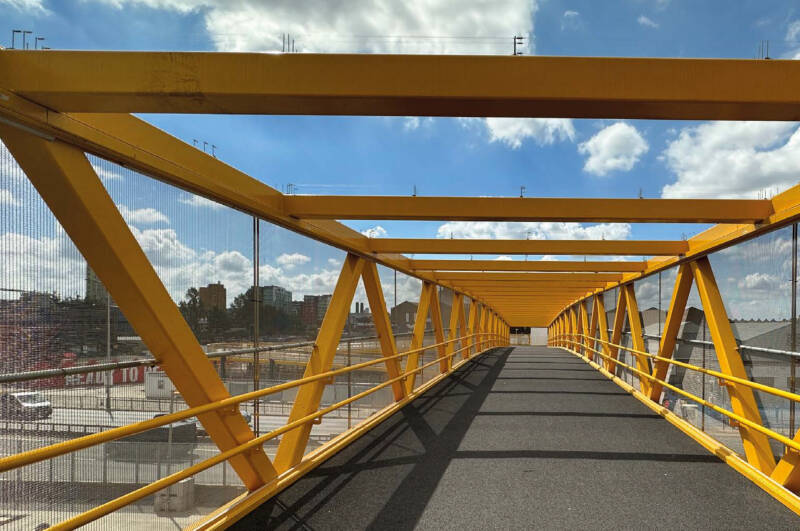
Greenwich Energy Centre (including Optical Cloack and The Pinch of Time artworks)
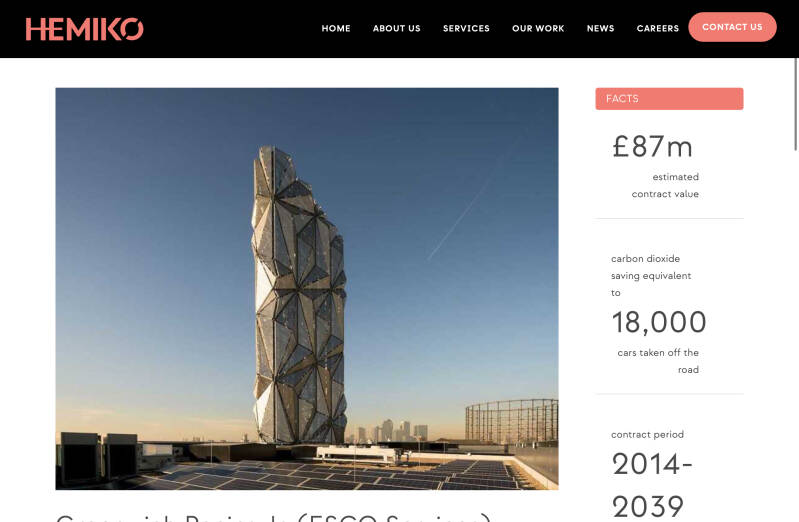
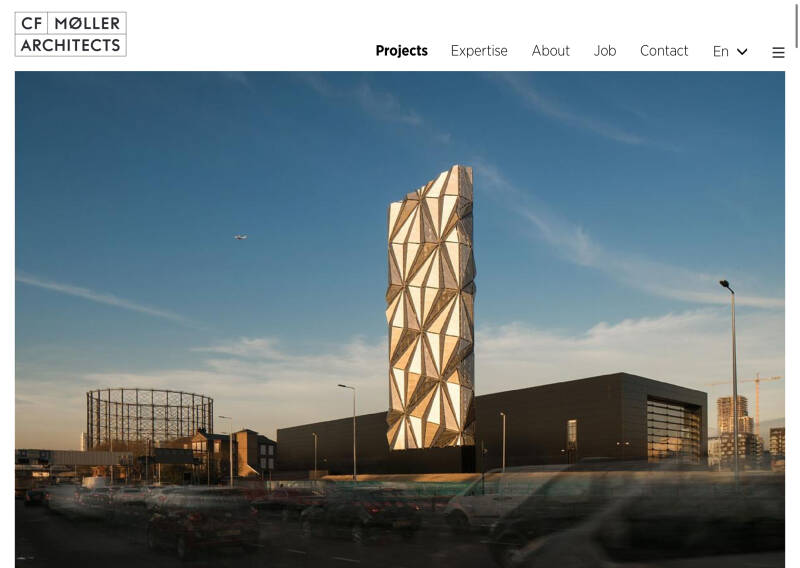
The Pinch of Time
A combined heat and power (CHP) energy centre has been constructed adjacent to and east of the A102 Blackwall Tunnel Southern Approach to provide district heating to an eventual total of 15,700 properties on the peninsula. It is operated by Pinnacle Power for Greenwich Peninsula ESCO Limited.[17][18] A 49 m high tower forms part of the energy centre, designed by C. F. Møller Architects, and was completed in 2016.[19] The tower is clad in a complex metal cladding formed of hundreds of triangular patterns (initially titled 'Lenticular Dazzle Camouflage'), designed by British artist Conrad Shawcross.[19] The tower cladding later featured as part of an art trail around north Greenwich, with the work given the title 'The Optic Cloak
The main energy centre includes 87MW of heat generation capacity. There are also temporary energy centres linked through a 10+ mile pipe network. The network has been designed by Pinnacle Power as a forward-looking energy system, focused on potential methods of extracting heat from sources as diverse as the Thames to the local tube network.
The contract provides Hemiko and the GPEL ESCO with the rights and obligations to supply heat to 15,700 residential units, including a mix of private and social tenants and to over 215,000 ft2 of commercial space.
Cycle shuttle from Silvertown (through the new Silvertown Tunnel)

Nearby, alongside Millenium Way
River Way
TERRACE OF REGENCY HOUSES
This housing terrace is among the oldest remaining buildings on the peninsula.
THE PILOT P.H. and hotel
WAR MEMORIAL
You are here…

Planning document published in 2017
Former Blackwall Lane or Dreadnought School


The Dreadnought School closed when the area lost its industries and its workers but the building survives as a museum store.


1998 River walk self guided walk https://greenwichpeninsulahistory.wordpress.com/wp-content/uploads/2013/07/greenwich-peninsula-walk-1998.pdf
Substation
Boord St. sewage Pumping Station
Its purpose: pumping sewer up to the Southern Outflall Sewer, which takes the black waters to CROSSNESS TREATMENT WORKS (see the THAMES PATH ROUTE, SE LONDON VILLAGES 1)
Boord St.?
Boord was the son of Joseph Boord and his wife Mary Ann (née Newstead). He was elected as Member of Parliament (MP) for Greenwich a by-election in August 1873,[2]and held the seat until he stood down at the 1895 general election

That was along Millenium Way

Still along Tunnel Avenue
VICTORIA DEEP WATER TERMINAL

966. A large area including the site of the Victoria linoleum works later became a part of the Port (on land known as Victoria Wharf) dedicated to handle container traffic. A privately owned container terminal receiving containers and unit loads from Europe by ship. To those who used it – like lorry drivers and watermen on the Thames – it was always known as ‘Vic Deep’.
In 1990 the site was taken over by Hanson Aggregates. It can accommodate vessels of up to 8,000 tonnes. Just before the Millennium, the large space was used to deliver aggregates, sand and cement for use in the construction of what was to be the Millennium Dome site and the housing blocks nearby. This is still an important strategic site in London which is safeguarded as an industrial wharf in the London plan and the Greenwich local plan. New concrete plants will play an important part in the redevelopment of the Greenwich peninsula and also make pre-cast concrete structures for major infrastructure projects in the capital – including the Thames Tideway Tunnel, Silvertown Road Tunnel and Crossrail 2. Its use as a wharf on the Thames is set to continue for many years to come.
Dry docks

Can of Gas, metalworks
PENINSULA GOLF RANGE
Golf courses
London has many golf courses, from exclusive private clubs like Wentworth and Sunningdale to more accessible pay-and-play options like Richmond Park Golf Course and Trent Park Golf Course. For those seeking indoor options, Urban Golf offers a unique experience.
Urban golf
Magazine London, events space


Now, you can join the THAMES PATH and THE LINE
THE LINE. Art installations, heritage, eateries

The Line is East London’s public art trail that connects Queen Elizabeth Olympic Park and The O2, following the waterways and the line of the Greenwich Meridian.
The Line was co-founded in 2015 by Megan Piper and the late regeneration expert Clive Dutton OBE (1953-2015) whose life’s work was rooted in a commitment to improving the quality of life for people in urban environments. The project was established to democratise access to art by introducing sculptures that were previously hidden from public view into the public realm for audiences to experience for free. Collaboration with local stakeholders and grassroots organisations were key to the development of The Line and continue to be fundamental to its success.

You can walk The Line in both directions. The blue dots represent art installations along the route.
From here, though, you follow the riverside, jump on the London Cable Car to get to the ROYAL DOCKS, and you from there you continue your journey towards the OLYMPIC PARK
BLACKWALL TUNNEL GATEHOUSE
The Blackwall Tunnel's southern gate is a historic, Art Nouveau-inspired gatehouse on the Greenwich Peninsula that serves as the entrance to the tunnel. It was designed by LCC Architect Thomas Blashill before the tunnel's 1897 opening and now marks the south entrance, located near the O2 Arena. While the north gatehouse was demolished in 1958, the southern one still stands, a contrast to the modern Silvertown Tunnel that now runs parallel to it
A tunnel in the Blackwall area was originally proposed in the 1880s. A bridge was not feasible due to shipping in the River Thames in East London. According to Robert Webster, then MP for St Pancras East, a tunnel would "be very useful to the East End of London, a district representing in trade and commerce a population greater than the combined populations of Liverpool, Manchester and Birmingham."[6] By this time, all road bridges in London east of the ferry at Chiswick were toll-free, but these were of little use to the two fifths of London's population that lived to the east of London Bridge.
Bazalgette, Binnie, Greathead
The initial proposal, made by Sir Joseph Bazalgette, called for three parallel tunnels, two for vehicular traffic and one for foot,[8] with an expected completion date of works within seven years.
The original tunnel as built was designed by Sir Alexander Binnie and built by S. Pearson & Sons, between 1892 and 1897,
It has an external diameter of 27 feet | 8.23 metres and was constructed using a Greathead tunnelling shield and compressed air techniques[10](named after its inventor, James Henry Greathead)
An elephant’s tusk, a murder, Walter Raleigh and men from Yorkshire
During the build they excavated a human skeleton with a stake through the middle and an elephant's tusk.[12] It was lit by three rows of incandescent street lights.[9] To clear the site in Greenwich, more than 600 people had to be rehoused,[13] and a house reputedly once owned by Sir Walter Raleigh had to be demolished.[14] The workforce was largely drawn from outside London; the tunnel lining was manufactured in Glasgow, while the manual labour came from provincial England, particularly Yorkshire
Newly opened tunnel, soon obsolete… new tunnel needed
The tunnel was formally opened by the Prince of Wales on 22 May 1897. The total cost of the tunnel was £1.4 million. Due to the increase in motor traffic in the early 20th century, the capacity of the original tunnel was soon perceived as inadequate.
Construction eventually started in 1958 with preliminary work on the northern approach road. The new eastern tunnel, 8.59 metres (28 ft 2 in) in diameter, was accepted into the roads programme in March 1959, and construction started in March 1960.[25] It was opened on 2 August 1967 by Desmond Plummer, Leader of the Greater London Council (GLC)
A better tunnel… but obsolete again
It is wider than the western tunnel, carries two lanes of traffic and is usable by vehicles up to 4.72 m (15.5 ft) in height. During construction, transport minister Ernest Marples clarified that unlike the Dartford Tunnel, also then under construction, tolls would not be imposed as the tunnel was already an established route.[27]
At the time of opening, the strip lighting in the tunnel was commended as "a big improvement"[26] on the standard provided in the original tunnel. In contrast with the Victorian northbound tunnel, the eastern tunnel had no sharp bends, and emergency telephones were provided.
New SILVERTOWN TUNNEL, 2025
Welcome to GREENWICH PENINSULA!
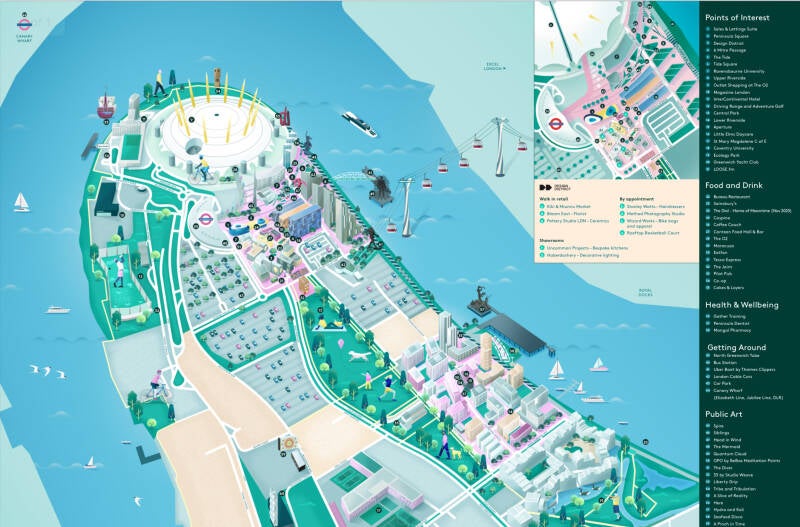
Formerly known as Greenwich Marshes[1] and as Bugsby's Marshes,[2] it became known as East Greenwich as it developed in the 19th century, but more recently has been called North Greenwich due to the location of the North Greenwich Underground station (not to be confused with North Greenwich on the Isle of Dogs, at the north side of a former ferry from Greenwich). The peninsula's northernmost point on the riverside is known as Blackwall Point,[3] and this may have led to the name Blackwall Peninsula sometimes being used in the late 20th century
The peninsula was drained by Dutchengineers in the 16th century, allowing it to be used as pasture land. In the 1690s the Board of Ordnance established a gunpowder magazine on the west side of the peninsula, which was in operation by 1695, serving as the government's primary magazine.By 1771 gunpowder was no longer stored at Greenwich.
The peninsula was steadily industrialised from the early 19th century onwards. Ordnance Works making heavy guns, and other sites making chemicals, submarine cables, iron boats, iron and steel.[1] Henry Bessemer built a steel works in the early 1860s to supply the London shipbuilding industry. oil mills, shipbuilding (for example the 1870 clippers Blackadder and Hallowe'en built by Maudslay), boiler making, manufacture of Portland cement and linoleum(Bessemer's works became the Victoria linoleum works) and the South Metropolitan Gas company's huge East Greenwich Gas Works. which primarily produced town gas, also known as coal gas. The gasworks grew to 240 acres (0.97 km2), the largest in Europe, also producing coke, tar and chemicals as important secondary products.
Early in the 20th century came bronze manufacturers Delta Metals and works making asbestos and 'Molassine Meal' animal feed. The peninsula remained relatively remote from central London until the opening of the Blackwall Tunnel in 1897, and had no passenger railway or London Undergroundservice until the opening of North Greenwich tube station on the Jubilee line in 1999.
Closure of the gasworks, power station and other industries in the late 20th century left much of the Greenwich Peninsula a barren wasteland, much of it heavily contaminated.
In the early years of the 21st century, surviving industries were mainly concentrated on the western side of the peninsula, between the river and the A102 Blackwall Tunnel southern approach road. They included Alcatel, a Tunnel Refiners/Amylum glucose plant (from 1976 until about 2008 part of Tate & Lyle) which closed in 2009, and two large marine aggregate terminals on the Delta Metals and Victoria Deep Water Terminal sites. The second of the two gas holders was demolished in 2020.

I hope that you are enjoying this web


